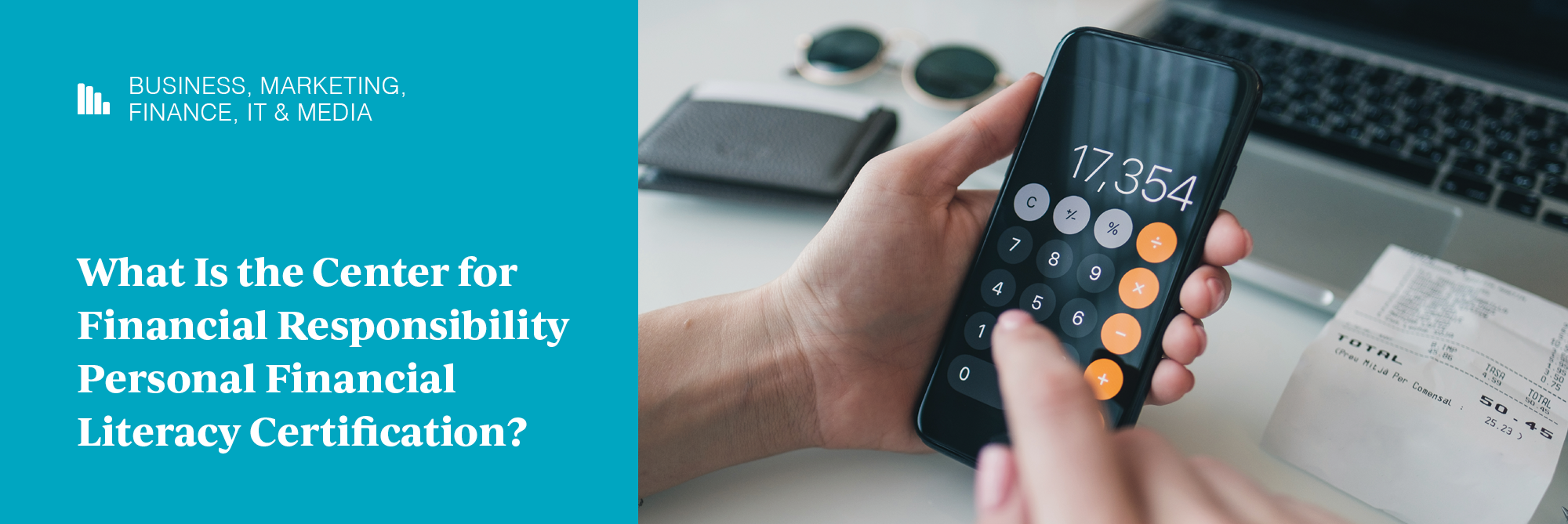Personal Finance | Industry Certifications
What Is the Center for Financial Responsibility Personal Financial Literacy Certification?
McKenna Garrison joined the iCEV marketing team in 2022 as the Content Marketing Specialist. Originally from a small town on the Gulf of Mexico, Garrison attended Texas Tech University from which she graduated with a B.A. in Public Relations & Strategic Community and an M.A. in Mass Communication & Media Studies. Garrison looks forward to bringing more of a storytelling element to iCEV social media pages. She also hopes to connect other CTE educators from around the country to the incredible curricula and resources iCEV has to offer.
Preparing your students for a certification exam can be nerve-wracking. Not only do you want your students to be prepared for the exam, but also possess a deep understanding of information and skills that they can carry with them well into their careers.
As a certification preparation curriculum provider, Career and Technical Education (CTE) teachers like you often ask how they can best prepare their students for the Center for Financial Responsibility Personal Financial Literacy Certification.
In this article, you’ll explore the most common questions teachers need answered about the Center for Financial Responsibility Personal Financial Literacy Certification, including:
- What is the Center for Financial Responsibility Personal Financial Literacy Certification?
- What Do My Students Need to Know for the Center for Financial Responsibility Personal Financial Literacy Certification Exam?
- How Do I Prepare My Students for the Center for Financial Responsibility Persona Financial Literacy Certification Exam?
By the end, you’ll have a complete understanding of what your students can expect on the exam and how you can prepare them for success.
1. What Is the Center for Financial Responsibility Personal Financial Literacy Certification?
The Center for Financial Responsibility Personal Financial Literacy Certification, created by a state-funded and Charles Schwab-supported institution on Texas Tech University's campus, was designed to prepare the next generation of financially literate citizens.
With 70% of adults stressed about money, according to the 2023 CNBC Your Money Financial Confidence Survey, this certification aims to ensure learners possess the ability to successfully navigate vital monetary decisions which affect both their personal and professional lives.
In fact, those who earn the certification are more qualified and prepared to make informed financial choices, perform better in the workplace and achieve long-term financial success, no matter what job they choose.
2. What Do My Students Need to Know for the Center for Financial Responsibility Personal Financial Literacy Certification Exam?
The Center for Financial Responsibility Personal Financial Literacy Certification Exam, hosted on the iCEV Testing Platform, consists of 100 questions and assesses knowledge and skills from the following weighted industry standards:
- Budgets - 20%
- Banking Options & Records - 10%
- Investments & Risk Management - 15%
- Taxes & Paychecks - 20%
- Loans - 20%
- Major Purchasing Decisions - 15%
Since each industry standard is weighted, it’s a good idea to spend additional time on standards with a higher percentage of questions on the exam. But, by mastering these topics, your students are well on their way to acing the certification exam.
Standard 1: Budgets
The first industry standard focuses on the learner’s ability to identify their current financial situation, investigate their money personalities, develop financial goals, separate their needs from their wants and develop budgets that incorporate their financial goals.
The Budgets domain consists of 20 questions that cover the following:
- Money Personality Identification
- Financial Goal Development
- Strategies for Meeting Financial Goals
- SMART Goal Setting Techniques
Developing budgeting skills is invaluable for individuals not only in their professional life but their personal life as well. When learners possess the ability to set financial goals and create budgets, they are on the road to being more financially responsible.
Standard 2: Banking Options & Records
The second industry standard explores the process of opening and managing different types of baking accounts, maintaining financial records, balancing bank sheets and interpreting bank statements.
The Banking Options & Records domain includes 10 questions covering:
- Types of Financial Service Providers
- Products & Services Offered by Financial Institutions
- Types of Banking Accounts
- Financial Record Maintenance
- Financial Statement Interpretation
Understanding what banking options are available and how to maintain financial records can be extremely beneficial to learners. By mastering this domain, individuals can make informed decisions about their banking institutions and confidently maintain as well as understand their financial records.
Standard 3: Investments & Risk Management
The third industry standard ensures learners can identify reasons for saving and investing and evaluate the cost and benefits of various savings options as well as the risk and return of various investment options.
The Investments & Risk Management domain is comprised of 10 questions including the following topics:
- Investment Options
- Saving Techniques
- Investing Risk & Return Relationships
- Retirement & Estate Planning Methods
- Risk Management Strategies
- Insurance Overview
Understanding the importance of saving and implementing those strategies is crucial for anyone who wishes to be financially responsible. But, by mastering investing and risk management, learners can also achieve lifelong financial stability.
Standard 4: Taxes & Paychecks
The fourth industry standard focuses on the importance of taxes, tax returns and related forms. This ensures that learners understand tax brackets, the consequences of failing to pay taxes as well as tax breaks, deductions, credits and exemptions.
The Taxes & Paychecks domain includes 20 questions covering the following:
- Tax Types
- Tax Liabilities & Related Forms
- Tax Returns
- Tax Breaks, Deductions, Credits & Exemptions
- Employee Compensation & Benefits
One thing every individual, regardless of most factors, will experience is taxes. Understanding the importance of personal taxes and how to best navigate filing tax forms is crucial for long-term financial success.
Standard 5: Loans
The fifth industry standard explores the basic borrowing process including evaluating types of credit, understanding the importance of a credit score and examining the components of the cost of borrowing.
The Loans domain consists of 20 questions covering:
- Sources & Types of Credit
- Credit Reports & Scores
- Borrowing Processes
- Education & Training Costs
Another element that requires a thorough understanding is loans. Whether that is student loans or getting a credit card, all learners need to ensure that they have developed the skills necessary to understand borrowing basics.
Standard 6: Major Purchasing Decisions
The sixth and final industry standard explores the financial impact of major life decisions and how to navigate them. This section ensures learners understand the benefits and drawbacks of homeownership or buying a car and what to consider when making major purchasing decisions.
The Major Purchasing Decisions domain includes 15 questions comprising of the following topics:
- Home-Buying Process
- Amortization/Mortgage Payment Structure
- Types of Mortgages
- Car-Buying Process
- Incorporating a Major Purchase into a Budget
Major purchases are not only huge milestones in a learner's life but can also add immense stress if they don’t know how to properly navigate the process of purchasing a house or car. When learners are aware of the process they are entering, they can be prepared for what lies ahead and plan appropriately for how such a large purchase impacts other aspects of their finances.
3. How Do I Prepare My Students for the Center for Financial Responsibility Personal Financial Literacy Certification Exam?
Now that you know what will be on the certification exam, you may be wondering how to best prepare your learners to ace the exam.
While there are many personal financial literacy curriculum options available, not all explicitly prepare students for the Center for Financial Responsibility’s exam.
Currently, iCEV offers a preparation curriculum for the Personal Financial Literacy Certification in partnership with the Center for Financial Responsibility. These resources are specifically designed to help students effectively prepare for the certification exam.
Within the preparation course, you’ll find comprehensive, pre-built lesson plans, multimedia videos, slide presentations, projects and activities relevant to the certifications standards. In addition, learners have access to review materials and two practice exams to ensure they are ready for exam day.
Do you think this certification could be a good fit for your classroom? Explore the Center for Financial Responsibility Personal Financial Literacy Certification and iCEV’s preparation materials to set your students up for certification and career success.


